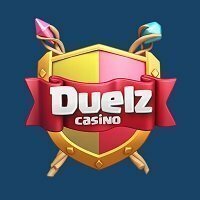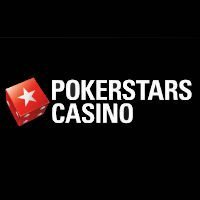
Black jack

Blackjack has been a long-time favorite in land-based casinos that have become immensely popular online. Here, we go through the rules of Blackjack and recommend a few online casinos where you can find Blackjack in the game selection along with bonuses on games.
Best live Blackjack casinos
Online casinos with Live Casino blackjack


 Online casino
Online casino  Fast payment
Fast payment  Popular casinos
Popular casinos
 Fast withdrawals
Fast withdrawals  Betting
Betting  Play with Swish
Play with Swish
 Same day withdrawals
Same day withdrawals  3000 + games
3000 + games  Excellent support
Excellent support
 24/7 support
24/7 support  Online casino
Online casino  Free bonus
Free bonus
 1000 + games
1000 + games  BankID
BankID  New casino
New casino
 Same day withdrawals
Same day withdrawals  Play with Swish
Play with Swish  3000 + games
3000 + games
 Popular casinos
Popular casinos  New casino
New casino  Fast payment
Fast payment
 1000 + games
1000 + games  Same day withdrawals
Same day withdrawals  Pay N Play
Pay N Play
 24/7 support
24/7 support  New casino
New casino  Play with Swish
Play with Swish
 Same day withdrawals
Same day withdrawals  Betting
Betting  Tax-free profits
Tax-free profits
 Easy registration
Easy registration  Same day withdrawals
Same day withdrawals  Large game selection
Large game selection
 Easy registration
Easy registration  Same day withdrawals
Same day withdrawals  Tax-free profits
Tax-free profits
 Same day withdrawals
Same day withdrawals  Without wagering requirements
Without wagering requirements  $ 25 Swish
$ 25 Swish
 24/7 support
24/7 support  Same day withdrawals
Same day withdrawals  Fast payment
Fast payment
 1000 + games
1000 + games  Same day withdrawals
Same day withdrawals  Betting
Betting
 24/7 support
24/7 support  1000 + games
1000 + games  Play with Swish
Play with Swish
 Fast withdrawals
Fast withdrawals  Large game selection
Large game selection
 Easy registration
Easy registration  Tax-free profits
Tax-free profits  Large game selection
Large game selection
 24/7 support
24/7 support  Betting
Betting  Without wagering requirements
Without wagering requirements
 24/7 support
24/7 support  Easy registration
Easy registration  Tax-free profits
Tax-free profits
 Easy registration
Easy registration  Jackpot slots
Jackpot slots  Same day withdrawals
Same day withdrawals
 Online casino
Online casino  Large game selection
Large game selection  Pay N Play
Pay N Play
 Easy registration
Easy registration  No turnover
No turnover  Free spins bonus
Free spins bonus
 1000 + games
1000 + games  Betting
Betting  Play with Swish
Play with Swish
 Same day withdrawals
Same day withdrawals  Play with Swish
Play with Swish  Bonuses without wagering
Bonuses without wagering
 Online casino
Online casino  Large game selection
Large game selection  Play with Swish
Play with Swish
 BankID
BankID  Same day withdrawals
Same day withdrawals  2000 + Games
2000 + Games
 Casino Games
Casino Games  Same day withdrawals
Same day withdrawals  Betting
Betting
 24/7 support
24/7 support  Betting
Betting  Large game selection
Large game selection
 BankID
BankID  Fast withdrawals
Fast withdrawals  Online casino
Online casino
About Blackjack
Today, many versions exist of the classic table game blackjack. Some variants worth mentioning include Single Deck, Blackjack Switch, and European blackjack. However, the selection will vary between online casinos. As a new player, it can be extra difficult to reorient yourself among all the options. We therefore focus here on giving you an introduction to the rules and overall play of the game, along with strategies, tips, and advice for dissipating the gambling fog.

Blackjack history
One of the world's oldest and most widely played card games found in casinos today, Blackjack has undergone some changes through the years. It seems to have originated from a number of other card games and can be traced back all the way to the 15th century. However, the game didn't really catch on in various casinos until the 1800s, and then also with its current name, Blackjack.
Split sentences
Italians think of Baccarat or Punto Banco as being the game that came before Blackjack. Today, we see Baccarat being played in many different places. It is a game that has been steadily gaining in popularity lately. Yet, at no point in time, has it been anywhere near as recognizable and out in the open, as it was during the high tides of its past. The French believe that blackjack comes from Quinze, but this game did not arise until the 18th century, which works against that theory. The Spaniards also have a theory that blackjack comes from Thirty-one, which was played a lot in the 16th century. The shared characteristic among these games is that the objective is to achieve a particular score—not 21, like in blackjack.
Vingt-et-un
If you go further into the story, another game existed where the aim was to reach the total of 21. The game was called Ving-et-un, which, as you might be able to deduce from a little school French, means precisely twenty-one. The game originated in the French 18th century and made its way to America in the 19th century. Although the rules of this game are slightly different from what we know today as blackjack, it is possible that the Foundation of blackjack is taken from this particular game.
Blackjack takes over casinos
No matter the starting point for Blackjack, the game's most recognizable version emerged in the 1920s. This was the decade that saw the game make its U.S. casino debut. While Blackjack was one of the earliest imported games from Europe, it didn't outshine other popular games like Roulette. To make blackjack more appealing, some casinos began giving out larger payouts for players who managed to get a card combination of Ace of Spades and Jack of Spades. This was essentially an advertising gimmick.
Only now can we really speak of the actual history of Blackjack. The game's popularity shot up, and by the 1940s, it had surpassed Roulette in frequency of play. Not only did interest grow, but also we began to see the kinds of strategy that make a mathematical difference when it comes to winning more often.
Free Blackjack
In contrast to games like slots, bingo, roulette, and numerous other casino games, blackjack involves a certain amount of rule comprehension for players to enjoy the game fully. Because of this, we suggest that you not only read about but also play free Blackjack before wagering real cash. It has served me well to attain a knowledge base of the rules—then test that knowledge in a virtual arena—prior to attempting any sort of Blackjack with actual stakes.
When you are feeling secure, it can be enlightening to experiment with strategies that slightly differ from the ones you know work. Because there is no set way to guarantee a profitable outcome from trades, it is best to do your experimenting in a risk-free environment, so that you can make mistakes without incurring any losses. Below, you'll find a few tips and some advice to help you with that. With a bit of luck, what you read here will help you light upon the profitable side of $ITIC situations.
Basic Rules
Because so many different versions of Blackjack exist today, watching the fact that the rules of the game differ between these is extra important. Here we will rule in detail on the game of Blackjack, but for those who really want to get into the rules and strategies of Blackjack, we recommend our course a little further down on this page.
It is said with such regularity that the goal in blackjack is to get a card hand with a value as close to 21 as possible without going over that one might think it actually is the goal. But it's not. The really not-too-common knowledge is that the aim of the game is to win against the dealer. Still, let's see how this goes. Let's see why you want to get as close to 21 as possible without actually getting there.
It's all about a trade-off. Do you want to draw another card and risk getting "fat," or do you bet that your hand will last? This is a classic physical flip between two pathways, drawing versus betting.
Make a bet
After you have settled down at a blackjack table, a bet must be placed to be in the game. Your chips represent your money, and each has its own set value. The bet is placed in the betting area marked on the table. If you have chosen chips of different value, the most valuable should be placed at the bottom and the least valuable at the top, prior to moving on to the next part of the game. You have the opportunity to combine chips into a bet that feels right for you, prior to Moving on to the next part of the game.
Start the game
The dealer holds the responsibility of passing out the cards and always does so in a clockwise direction. When the game starts, each player receives two cards laid face up and only one of the dealer's cards is visible to the player. All of your subsequent actions are supposed to stem from an analysis of your own hand and the dealer's exposed cards. The basic premise is that you want two (or more) cards that can count in combination to a value nearer to 21 than either the dealer's visible cards or the hidden cards that the dealer has. If you take any additional cards, as we reckon your worth in terms of total value, you should base your decision to hit or stand over the divide on whether your next card is likely to push you over the limit (and therefore cause you to lose). All along, you should be considering this as a competition with the dealer.
Value of Cards
Every numbered card, which ranges from 1 to 10, is worth exactly what its face value is. Therefore, if you happen to have 6 and 9 in your hand, the total you're adding up to is 15. Every face card, which includes the Jack, Queen, and King, counts for 10. Therefore, if you were to hold a hand containing a Jack and a King, the total value of your hand would be 20. The ace occupies a special place in blackjack. It can assume two different values: 1 or 11. What value the card gets often depends on what is most beneficial for your current card hand. If you are already holding a face card that has a value of 10, the ace automatically gets a value of 11. The total is 21, which is the best you can achieve in blackjack.
Play Blackjack online
You know that Blackjack has won new places, outside of the traditional casino world. The most obvious one is the online version. Today, a player can enjoy the experience of a 21 game anywhere, anytime. And the online player is not just having a private, at-home moment. There are whole new online worlds of Blackjack—complete with major tournaments and professional, living-wage players.
A guide on simple blackjack strategies follows further down on this page.
Blackjack bonuses
This well-known game is consistently classified as an online casino game because the bonuses that apply to casino games are typically usable when playing blackjack. There are offers for both new customers and existing ones among the bonuses at casinos with New Zealand licenses. Free spins without deposit are a type of bonus, but they are not a bonus that can be used in just blackjack games.
New clients can anticipate receiving what are termed welcome bonuses, whereas, for customers who have already established accounts, it is typically reload bonuses that come into play. The welcome bonus is a pretty stable feature among online casinos, although the match percentage and the maximum amount may fluctuate over time.
Reload bonuses are shorter in duration and are thus more time-sensitive. Because of this fact, it's even more important that you familiarize yourself with the online casino you're using and its various offers if you want to be able to claim the bonuses and use them to your advantage. Revisit the site regularly, and make sure to sign up for any newsletter or mailing list that will keep you in the loop about the Bonafide benefits of your online casino. Then compare the different offerings from the different sites to see which ones are the most advantageous to you.
Wagering requirements for Blackjack bonuses
It can be a bit tricky to achieve wagering requirements when playing with bonus money at just table games like Blackjack and not at all tricky with most other games.
For the vast majority of online casinos, Blackjack does not bring in much of any percentage of the turnover. The same goes for the vast majority of table games, so be sure to double-check the bonus rules and terms of your bonus offer before you plunk yourself down at any of the tables!
Game variants in Blackjack
An essential aspect to remember is that the house edge can change based on both the kind of Blackjack game you've chosen and your location. You should thus get into the habit of scouting this out before you even start to play. Though we give a few common instances of the house edge in various versions of the game, the actual edge can and does vary. It can definitely be worth your while to pick a casino that gives you a fair shot.
House advantage at spal on Blackjack:
- Atlantic City Blackjack – 0.35 %
- Bonus Black Jack – 0.39 %
- Double Exposure Blackjack-0.69 %
- European Blackjack-0.39 %
- Spanish Blackjack-0.38 %
- Vegas Downtown Blackjack – 0.38 %
- Vegas Strip Blackjack-0,34 %
Atlantic City Black Jack
This variant is present at nearly all online casinos in both single-hand and multi-hand forms, and both versions follow the same rules and use the same strategies. The advantage for the House in this version of Black jack is usually one of the lowest found anywhere. The dealer has two cards from the start, and the only way you can lose more money in this game than in others you might find is if you double your bet and then lose. One way to avoid that situation is to always play as if the dealer has a ten showing.
Bonus Black Jack
The same rules apply to this game as to European blackjack, with the distinction that players can participate in a bonus bet alongside the main game. This bonus is won if you bet on it and are dealt a blackjack with an ace and a jack. The best possible combination is the ace of spades with the jack of spades, which gives you a payout of 50:1. The game employs two decks of Cards.
Double Exposure Blackjack
This game differs significantly from the classic variants. Eight decks are used, and the dealer's first two cards are dealt face up. One might think this gives the player an edge, but alas, there are rules that make this not so. In practice, the House has an advantage of 0.69%, which is higher than you will find with virtually any other blackjack variant. Also, if you think the dealer always has to follow inflexible rules, think again. The dealer always wins in a draw. The dealer always stays on soft 17.
European Blackjack
This version is like the standard game, with only a couple of differences in the rules. The dealer must stay on a soft 17, while the dealer in the standard version takes one more card. You can only double your bet when the sum of the first two cards is 9, 10, or 11. You are not allowed to surrender.
Spanish Blackjack
Despite the name, this is an American game that differs from many other forms of blackjack. Eight decks of 48 cards each are used here. This is because all cards with a value of 10 are left out of the decks. This gives the house a huge advantage if you don't know the rules of the game, so pay attention.
Vegas Downtown Black Jack
This version is also American and normally comes as single-hand or multi-hand. Depending on which you play, different optimal strategies apply. But come what may—come soft 17 for the dealer, of which there may not be more than 2 in a game, since only 2 decks of cards are used—at least we hope that there will not be more than 4 such dealer busts in a single game! After all, the crazier the gambling, the fewer bucks for the house.
Vegas Strip Blackjack
One of the most sought-after variants of Vegas blackjack, this game has a relatively small house edge. You would play it pretty much the same way you play classic blackjack, except that you'd be using four decks instead of two. The dealer stops on soft 17.
Progressive Blackjack
This Blackjack type is a 21 variant with a side bet that—perhaps not entirely surprisingly, given the name—offers a progressive jackpot. This allows not only the players at the table to win their own game round but also a significant amount that grows on the side to become quite substantial.
American Black Jack
There are a few slight differences between the two variants of the game. The objective is as it is for Standard Blackjack, but in the European version you cannot double after you've split your hand, and you can only split once. In the American variety, it is possible to both split aces and also choose Surrender late in the game, which is not allowed at all in European Blackjack.
Pontoon
Pontoon is quite similar to classic Blackjack in various respects, but it stands apart in one critical way: when dealing the cards, you deliver them all face down, which means the players have no idea whether the dealer has a face card or not. As in Blackjack, the players are trying to get as close to 21 as possible without going over, but Pontoon has some unique features that set it apart from its classic cousin. Of these, the most notable is a hand called the "five card trick," which is the second best type of hand you can have in Pontoon.

Casino School - quick course in Blackjack for beginners
There's no reason to waste time—we dive right into the heart of the matter. In this opening section, we will describe a blackjack game so that you, who are unfamiliar with it, can get started and playing in no time. You will understand how the game works and be able to play it, atomic and matter, solo. You won't know how to infuse it with advanced blackjack strategy, but then again, when have you ever learned a new game and immediately understood its advanced strategic possibilities? Every thing has its time; you have to learn to play first, to walk before you run.
Blackjack in 10 steps:
- Blackjack can be played with 1 to 8 decks of Cards. The fewer decks, the better the chances of making good decisions, but more on that later.
- In blackjack, you play against the croupier. Other players will not affect your game.
- The goal is to get a better hand than the croupier, without going over 21 (”get fat”).
- Number cards have their natural value, face Cards are worth 10, and Aces are worth 1 or 11 depending on what is best.
- After placing bets, the croupier deals two cards to all players and himself. One of the croupier's Cards is open (visible).
- Players can now choose from a number of actions. The most common is "stand”or "pull". Read More further down.
- When each player has had his turn, the croupier turns over his hidden card (hole card). If he has 16 or less, he draws new. In some cases, the croupier draws new even on "soft 17" (read below).
- If the croupier goes over 21, all players who have not become ’fat’win.
- If neither you nor the croupier get fat, the highest hand wins.
- Regular win gives 1:1, while blackjack (21) gives 3: 2. In case of equal ("Push"), the bet is usually returned.
There were a couple of points! Still, maybe the most straightforward way to grasp the principles of blackjack is to take a quiz. The essence of becoming a solid player lies in tying together knowledge and experience, so make sure to peruse the game above and then put it to the test.
Possible actions after the first two cards
We stated previously that after receiving your initial two cards from the croupier, you can opt for "draw new" or "stay." These are the most usual options, but certainly not the only ones available. Let's examine them individually, in detail.
- Drag / Hit
- Subsequent to the initial deal, you must select between standing and requesting more cards. If you desire more cards, you will press the command that reads "hit." You may continue to draw new cards, if you so desire, until the total value of your hand exceeds 21.
- Stop / Stand
- When you are happy with your hand of cards, whether it is the first hand of cards or one that you have obtained by drawing additional cards, you indicate this by clicking on "stand". After this, you cannot draw any more cards, and you are now playing with whatever card hand you have.
- Double/Double
- When the first card deal looks good and a third card seems likely to turn up splendidly, you can double your bet. If you're drawing to a lucky moment, that moment has twice the winning potential as if you were just drawing to one winner.
Additional terminology to note is 'Natural' - A natural is a hand that contains two cards that together add up to 21. A natural is a blackjack. Push – - This is the term that denotes when there is a tie between you and the house. And ' Bust/Thick ' – If you exceed the desired value of 21, this is called bust, and you consequently lose your bet.
Quick guidance in the game
Knowing when to split two cards and when to double in Blackjack is not always so easy. Even if you understand the terms and the rules, playing smart in the heat of the moment can be tough. Here are some guiding tips:
When should I play blackjack?
Should you be engaged in an online casino that features blackjack variants with the intriguing option to "fold" (more commonly referred to as surrender or LS), know this: your opportunity to employ such a tactic in the game of blackjack is limited. You can only use it when you possess the original two cards dealt to you. After that, even if you don't like what you see, you're expected to "hit" or "stand" (although you might prefer not to and might be better off wagering that you will win with certain cards). Know when to use the seemingly counterintuitive "surrender" option when it is in your favor.
Should I split?
This ought to be your second decision made in sequence at the table, that is, if you are going to divide the two cards you have been dealt into two distinct hands. You only hold this option when your first two dealt cards form a pair—alternatively, if you have two cards valued at 10 (such as a jack and a king). If neither of these scenarios is accurate, then it is more than likely best to keep your hand together.
When can I double down in Blackjack?
When it is time to double down, which you can only do when the game allows, we recommend that you go ahead and do it. This is not always an option in all versions of Blackjack. However, a tip is to double down only when you have a good hand that stands a respectable chance of winning. If you succeed after going for it, the profit is twice what you would have won otherwise.
When to take a Hit card or stand over in blackjack?
Another bump to consider before breaking loose is whether to take another "hit" card or skip. If none of the above options apply to your hand, then you need to think about whether to hit or stand. Remember, you're trying to get as close to the sum of 21 as possible without going over. Review the cards and make the decision that seems best to you.
Tips for beginners
You have now been given a fundamental guide to the game of blackjack. We cannot stress enough the advantage of playing free blackjack first to get the hang of things. One excellent recommendation in this department is NetEnt's version of the game. Their Single Deck Blackjack, Pro variant, to be specific, is a good way to ease yourself into real money blackjack.
Set up a budget
This fundamental tenet must be the A and O for everyone participating in betting, be it online or offline. Most players probably notice how easy it can be to become carried away when the action intensifies. We therefore strongly recommend that a player set a limit on the amount to be wagered in advance. One good, simple piece of advice is to select a sum that feels reasonable and then to visualize it as already lost. If the idea of losing it makes a palpitating sensation rise in your chest, then you are obviously not comfortable enough with the amount. Adjust it downward until you feel okay with the loss in your mind's eye. But this isn't just about setting a limit; it's also about not exceeding it once the limit is reached. This is a very tough nut to crack if you happen to be a kind of person who uses the logic of
Fewer decks provide a better overview
You know better what cards remain in the deck when blackjack is played with fewer decks. This better knowledge allows for strategic thinking. For instance, if you have two aces, what are the odds the croupier has an ace also? In an 8-deck game, the answer is not promising.
Beware of stingy blackjack variants
A good basic rule for not getting blown is to choose a blackjack game with the following payouts:
- Blackjack: 3:2
- Win: 1:1
- Insurance: 2:1
Payouts on blackjack games are getting worse, and many players probably don't even realize it. These seemingly thrilling games often come packed with lots of side bets and features to distract you from the fact that blackjack itself is now worse than it used to be. And while we didn't see ourselves as game snobs when we compiled this list of the best blackjack variants to play, you might see these winning conditions (or some set of them) as benchmarks for a good game of blackjack.
The simpler, the better
There might be exceptions, but this is a pretty good rule of thumb. The simpler the game, the better your odds tend to be. Blackjack comes in a lot of different flavors, most of which are not quite as tasty as the straight-up version. Even when you find a casino that offers • 7-to-1 or better blackjack payouts, • no insurance or with terrible insurance odds, • 8-deck shoe or less, and • other favorable rule sets,
It's important to point out that this is unrelated to how the game looks. For instance, NetEnt's blackjack games are very graphically appealing—but they still present good rules.
Blackjack Strategies
Certainly, luck and chance play major roles, but it is not just by chance that Blackjack has become one of the pro player's favorite games when you can use mathematical calculations to improve your odds. A seasoned gamer can utilize a Blackjack strategy to whittle down the house edge from 2% to 0.5%. Below we walk through some of the strategies you can employ in classic Blackjack.

Strategy schedule
You have the option of following a basic strategy to increase your odds in blackjack. This basic strategy can be implemented with a chart that tells you how to play your hand based on what the dealer is showing. There are all sorts of schemes available on the Internet, for both single and multiple decks. Following is an example of a scheme you can use. To avoid ambiguity, I should mention here that all of these schemes assume that the house uses the following very standard rules: 1. The house draws to 16 and stands on all 17s. 2. The house may not have a 6-5 or 6-6 rule. 3. The house draws to 8 or lower. 4. The house does not use any unusual shuffling or cutting tricks.
H = Hit (Drag new)
D = Double (Double)
S = Stand (stop)
P = Split (Split)
| The croupier's open card | ||||||||||
| Your hand | 2 | 3 | 4 | 5 | 6 | 7 | 8 | 9 | 10 | A |
| 4-8 | H | H | H | H | H | H | H | H | H | H |
| 9 | H | D | D | D | D | H | H | H | H | H |
| 10 | D | D | D | D | D | D | D | D | H | H |
| 11 | D | D | D | D | D | D | D | D | D | H |
| 12 | H | H | S | S | S | H | H | H | H | H |
| 13 | S | S | S | S | S | H | H | H | H | H |
| 14 | S | S | S | S | S | H | H | H | H | H |
| 15 | S | S | S | S | S | H | H | H | H | H |
| 16 | S | S | S | S | S | H | H | H | H | H |
| 17 | S | S | S | S | S | S | S | S | S | S |
| A, 2 | H | H | H | D | D | H | H | H | H | H |
| A, 3 | H | H | H | D | D | H | H | H | H | H |
| A, 4 | H | H | D | D | D | H | H | H | H | H |
| A, 5 | H | H | D | D | D | H | H | H | H | H |
| A, 6 | H | D | D | D | D | H | H | H | H | H |
| A, 7 | S | D | D | D | D | S | S | H | H | H |
| A, 8 | S | S | S | S | S | S | S | S | S | S |
| A, 9 | S | S | S | S | S | S | S | S | S | S |
| A, A | P | P | P | P | P | P | P | P | P | P |
| 2,2 | H | H | P | P | P | P | H | H | H | H |
| 3,3 | H | H | P | P | P | P | H | H | H | H |
| 4,4 | H | H | H | H | H | H | H | H | H | H |
| 6,6 | H | P | P | P | P | H | H | H | H | H |
| 7,7 | P | P | P | P | P | P | H | H | H | H |
| 8,8 | P | P | P | P | P | P | P | P | P | P |
| 9,9 | P | P | P | P | P | S | P | P | S | S |
| 10,10 | S | S | S | S | S | S | S | S | S | S |
This strategy seems more complex than it truly is. You just look up your own hand on the left side of the schedule and the dealer's hand on the top edge of the schedule. The scheme is marked with possible card values. All you do is follow the dealer's card value and your own card value into the schedule, to a point that indicates what you should do next. Your options at that point are to hit, stand, split or double.
Strategic card counting
In the 1950s, it was found to be relatively easy to gain an unfair advantage and get a win in Blackjack compared to other casino games. For this reason, and since it lends itself so well to team play, Blackjack has always been a game where very intelligent and not-so-intelligent people have taken to counting cards and using basic strategies (some call them system programs) to access the win button.
The first system was published by Edward Thorp. The book "Beat the Dealer" came out in 1963 and scared the wits out of many casino owners. Since then, the systems have been further refined, but the casinos have taken countermeasures and found new ways to meet the strategies. For some time, however, it was considered to completely remove Blackjack from the casino table games.
How it works
Playing in a standard online casino renders card counting worthless because the cards are reshuffled after every payout. If you want to have any chance of counting cards at all, you must play at a live casino, where real dealers supervise the game, which is something that many online casinos now offer.
The method is simple, however. You count plus ( + ) or minus ( - ) for all cards dealt. For each low card (2, 3, 4, 5 and 6), count +1. For 10, face cards and Aces, count -1. For the other cards (7, 8 and 9) count nothing. If you keep a running total in your head, at any given moment you should have a number that's either positive ( + ), negative ( - ), or neutral ( 0 ). If you have a number that's positive, you should bet more. If you have a number that's negative, you should bet less. Counting cards is also somewhat more effective in blackjack when there are fewer cards left to deal.
Practice Other strategies
As I said, blackjack is a quite easy game to play at a basic level, but mastering the more complex strategies requires a certain amount of effort from you as a player. You have to learn to not only analyze your own cards but also the dealer's, and then make smart decisions based on this. If you're interested in counting cards, you need to train both short-term memory and concentration. The whole thing is made further complicated by the fact that many variants of blackjack are played with several decks of cards. But you know what? You don't have to learn to count cards to improve your blackjack odds. A great way to better your chances is to learn basic strategy.
Read, try and learn
The practice of blackjack and the theory behind it are two distinct yet complementary sides of the same coin. When you have a grasp of all the ins and outs of the game, the next natural step is to hone that academic skill until it is sculpted into a game-playing skill. It seems obvious, then, to say that true skill in blackjack requires the right mix of time, interest, and, yes, even some pleasant, profitable moments at the table. You cannot know all there is to know about blackjack or any game without playing it, and the best game to play is, of course, free blackjack.
More live casino games






 Campaigns
Campaigns







































 Gaming licenses: New Zealand , Malta (mga)
Gaming licenses: New Zealand , Malta (mga)
 Number of games: 1000+
Number of games: 1000+
 Minimum deposit: 25kr
Minimum deposit: 25kr
 Payment methods:
Payment methods:







 Casino Games
Casino Games